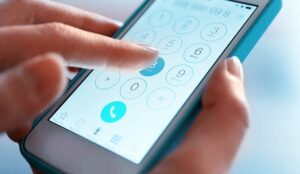Nazima Rayani at Cyara explains why toll-free number testing doesn’t have to be a drag.
There’s a Better Way To Keep Your Toll-Free Numbers in Line
Think about a time when you had to call a company for assistance in solving a problem. Maybe you had a return to make, utilities to turn on, doctors offices to speak with.
You looked up the customer service number and gave it a ring. Nothing. The line isn’t working and you can’t connect to the business. It’s an annoyance and may even give you pause about giving this company your business.
Large companies, especially in highly competitive industries, like healthcare and utilities make sure that toll-free numbers are part of their customer service operations.
While self-service options are more widely available than before, many customers prefer talking to another human, or having the option to talk to a person at some point in their interaction with a business.
The necessity of toll-free numbers means companies are responsible for ensuring that every one of their hundreds – or even thousands – of toll-free numbers are live and answering customer calls. This requires testing – and lots of it.
Each toll-free number in the system must be checked periodically to ensure it’s live and working properly. Not doing so risks customer service failures, lost revenue and compliance penalties.
With so many numbers, though, every telecom manager knows the feeling of dread when the time comes to test their lines.
In a traditional testing setup, they’re staring at dozens of hours of manual labor, where they either spot-check a handful of numbers, which leaves them wide-open to vulnerabilities, or dial each 800 number individually to see if the line is functioning as intended and if the correct automated messages are being played.
There are significant costs in dollars and time spent on manual work, regardless if it is done internally or outsourced – which can be even more expensive and take more time.
Toll-free number testing doesn’t have to be a distressing experience, though. It’s possible to do it far more efficiently and effectively. To see why, let’s compare the traditional approach to Cyara’s new, automated Toll-Free Fast Check solution.
The Traditional Testing Approach
In a traditional testing setup, there’s only one way to check your toll-free numbers and ensure they’re working properly, and that’s through manual testing. For some large companies, with tens of thousands of numbers, this is a gigantic undertaking.
Consider a major health insurer preparing for open enrollment season. Since the previous year, perhaps a hundred of its thousands of numbers have changed or expired.
Various teams may have also asked for a few hundred new numbers to support campaigns. When customers (both new and old) start calling to initiate or update their enrollment, those numbers need to work without any problems.
In the lead-up to its busiest time of year, the health insurer must test every single number to make sure not only that it’s working but that the script is correct for the region it’s serving.
Are all the menu options up to date? Does it send them to the right call centre? These aren’t quick issues to test, but they’re essential to delivering good customer experience (CX) assurance.
Besides the sheer time and cost of manual testing, there’s the risk of human error. If one tester has to call a few hundred numbers, it’s easy to see that mistakes are likely to happen. The cost of those mistakes can be serious, both in terms of lost revenue and compliance penalties.
The Value of a Fast-Check Solution for Toll-Free Numbers
Given all those factors, it’s no wonder that manual testing is often seen as a necessary evil in the world of contact centres. But what if there were another way? What if you could test those numbers in a fraction of the time with zero risk of human error? If you could do this with automated toll-free number testing, what would the result be?
Bolster Your CX
Most importantly, an automated toll-free number testing solution would increase your CX assurance by leaps and bounds.
When you can test every single number in your system in as little as 48 hours, you can quickly identify defunct numbers and other errors hiding in your IVR. With fast answers about where those errors might exist, you can quickly address them and rely on fewer dropped calls and happier customers.
With confidence that customers will have a seamless call experience — even during the busiest time of year — contact centre managers and owners can enjoy peace of mind, knowing that NPS and CSAT scores aren’t at risk due to simple issues that could have been prevented.
Boost Your Bottom Line
Another benefit of an automated solution is its impact on your bottom line. Automated toll-free number testing significantly cuts back on manual labor costs, while also reducing the risk of lost revenue by ensuring your toll-free numbers aren’t causing CX issues.
Through automation, your team members can focus their time on other critical tasks. If your contact centre operates in a heavily regulated industry, such as healthcare or utilities, you’d also avoid potentially steep non-compliance fees by ensuring every number has been tested.
Between securing revenue and curbing costs, automated testing could be a serious boon for your organization.
Enhance Employee Engagement
Beyond customer service and your company’s bottom line, automation will transform how your staff goes about testing your toll-free numbers. A traditional testing model requires your employees to spend hours of redundant dialing and tracking which numbers work and which do not.
Replace the traditional setup with an automated toll-free number testing system, though, and you immediately pave the way for higher employee satisfaction.
Imagine how your employees would feel if they could spend less time on menial tasks, like manually dialing tens or hundreds or numbers, and spend more time on other crucial projects.
Author: Guest Author
Published On: 22nd Sep 2022
Read more about - Guest Blogs, Cyara















